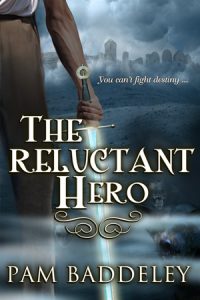
These pumpkins are a little late, but I didn’t quite manage to hit the Hallowe’en deadline for this update. [Image: Depositphotos, standard licence]
November has rolled around again and usually I would be doing NaNoWriMo (National Novel Writing Month) which I first did in 2012 and apart from that year had ‘won’ ever since, either completing at least 50,000 words or, when being a ‘rebel’ and editing an existing draft instead, putting in 50 hours or more of that. But towards the end of last November it came to my notice (I was using the forum less and less since they went over to the horrible interface they now use and a lot of my writing ‘buddies’ had left) that a very unpleasant controversy had emerged concerning the site. I won’t go into it as I’m sure there’s plenty online about it still, but I didn’t want anything to do with their site after that.
Their well-publicised decision earlier this year to fully support writing with Generative AI was the last nail in the coffin. This decision is supposed to be in support of people with neurodivergent conditions as if they can’t write for themselves. NaNoWriMo was originally set up to encourage people to do at least some writing in November; it wasn’t necessary to “win” as they called it, an unfortunate term in my opinion. This announcement ignores the fact that the challenge is a struggle for most people for a variety of reasons, including chronic illness, family and carer responsibilities, work and other issues. To say that neurodivergent people can produce their 50,000 words in a generative AI system is not only patronising, it completely does away with the point of doing NaNo at all, since if you can get a machine to write your work for you, why bother? It’s the equivalent of having a ghost writer do it, except you’d have to pay a ghostwriting human. NaNoWriMo is meant to be a stretching goal. If you don’t even try, what’s the point?
Anyway, given all this I’m doing my own challenge instead. I’ve already put in a full day yesterday of about nine hours, revising about 15,000 words of my Mageborn sequel, written in the past month so that I could send that instalment to my critique group. I also revised a 800+ word homework assignment for another online writers’ group I’m in and sent that round. I don’t envisage writing every day in November but frequently enough to establish good habits as it’s all too easy to be sidetracked by other things. But I have been making good headway on the sequel during the last few months and continue to find Scrivener a good tool. I can export from it in Word for my critique group and it only needs a bit of tidying up: if I can get time to explore the export options a bit more I might even be able to cut down on that.
I finally got round to having a play in BookBrush and creating a QR code today. I think these will be useful for putting in the back of paperbacks under the ‘Also By’ type page as an easy way for a reader to go direct to my website and see all the books currently available at any one time. I also want to try out the A+ content template to add to my book page on Amazon. I always seem to have a lot of to-dos around the marketing side of things and struggling to find time to tackle them. I did manage to get a free extension working from Kindlepreneur, the people who produce Atticus and Publisher Rocket, and that flagged a change to The Reluctant Hero on amazon.com (the only site it works on at present) which when I checked it revealed that the categories of the book, previously along the lines of what I’d requested in the book page on Amazon, had completely changed to New Adult & College Fantasy categories and War & Military Action Fiction for reasons best known to themselves. The UK site shows no categories at all. I’ve been doing a fair bit of online training about Amazon categories and keywords but it didn’t prepare me for a radical change like that. Hopefully, it will be a move for the better in making the book more discoverable.
Goals:
- Complete homework assignment for face-to-face group next week
- Work regularly on Mageborn sequel
- Complete latest keywords/categories seminar
- Create a series description on Amazon for the Chronicles of Namista based on afterword in The Reluctant Hero
- Explore A+ content for The Reluctant Hero






 Well, my good resolutions about posting more regularly on the blog went a bit by the wayside, but a few other things have also been parked lately as I attempt to get through yet another couple of read throughs. The trouble with a long book like this is there are countless small bits of continuity that slip by, but eventually jump out in yet another read through. Just spotted one where someone stands up who was already standing in the corner of the room …. ho hum.
Well, my good resolutions about posting more regularly on the blog went a bit by the wayside, but a few other things have also been parked lately as I attempt to get through yet another couple of read throughs. The trouble with a long book like this is there are countless small bits of continuity that slip by, but eventually jump out in yet another read through. Just spotted one where someone stands up who was already standing in the corner of the room …. ho hum.

